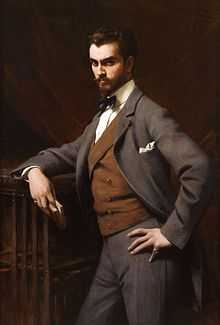James Hazen Hyde

James Hazen Hyde (1876–1959) was the son of Henry Baldwin Hyde, the founder of The Equitable Life Assurance Society of the United States. James Hazen Hyde was twenty-three when he inherited the majority shares in the billion-dollar Equitable Life Assurance Society in 1899. Five years later, at the pinnacle of social and financial success, he set in motion the first great Wall Street scandal of the 20th century, which resulted in his loss of the vice-presidency of The Equitable, and his removal to France.
On the last night of January 1905, James Hazen Hyde gave one of the most fabulous costume balls of the Gilded Age. Falsely accused through a media smear campaign initiated by board directors E. H. Harriman, Henry Clay Frick, J.P. Morgan and company President James Waddell Alexander of charging the $200,000 party to his company, Hyde soon found himself drawn into a maelstrom of allegations of his corporate malfeasance. The shocking revelations almost caused a Wall Street panic and resulted in an investigation of the entire insurance industry by the State of New York.
Hyde served as an ambulance driver during World War I
He was granted an honorary degree by the university of Rennes in 1920.[1]
References
- ↑ (French)Renseignements mondains, Le Figaro, 1920/08/01
Fine Art Connoisseur, June 2008, portrait of James Hazen Hyde is on the front cover and included in article "Stanford White, High Society, and Portraiture."
- Patricia Beard (2004). After the Ball: Gilded Age Secrets, Boardroom Betrayals, and the Party That Ignited the Great Wall Street Scandal of 1905. Harper Collins. ISBN 0-06-095892-8.
|